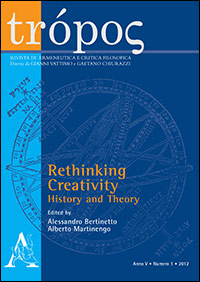Thinking and/is drawing
Artistic Creation According to Leonardo da Vinci
DOI:
https://doi.org/10.13135/2036-542X/7615Keywords:
image, perspective, speculum, beauty, nature, knowledgeAbstract
In Leonardo’s work, as well as in Cusa’s, an exaltation is present of the practical knowledge of the illiterate man, i.e. the mechanical arts, within which humility and admission of ignorance are the heart of a practical knowledge.The same ‘culture of the shop’ from which Leonardo used to draw, refers to graphic intuitions in which art and science converge; these conjectural notions, transformed into figures, are easily adopted and comprehensible to everyone. The same applies to enigmas devised by Cusa, performative schemata of symbolic geometry able to exemplify the soul’s path to God, the mystic vision of the divinity, and the hidden mechanism of divine life. These exempla, in the case of Leonardo, are a sort of manual–inventory or technical solutions that may prove useful in more ways than one. The most surprising result of these experiential guides is the portrait of Mona Lisa, where the natural landscape on the background and the enigmatic face of the lady—separate but irresistibly attracted to each other — remind the artist’s main challenge: to enchant the entropic processes of nature into the plasticity of the beautiful form.


